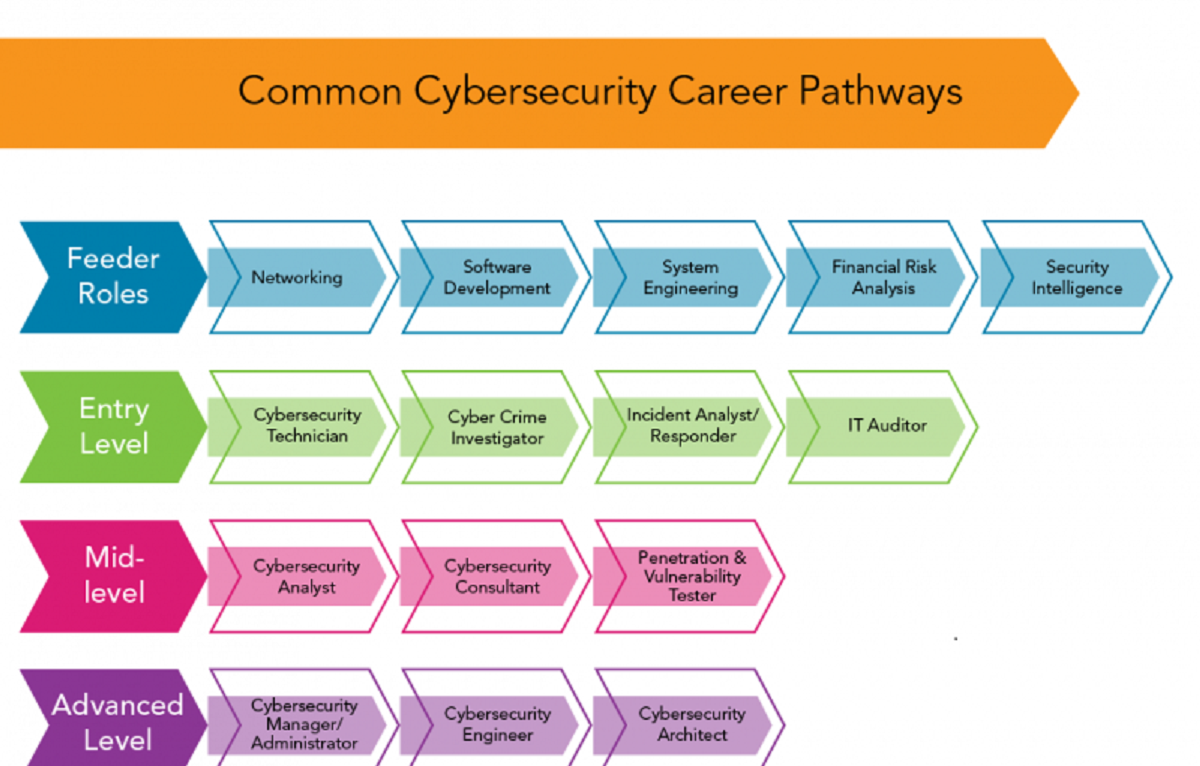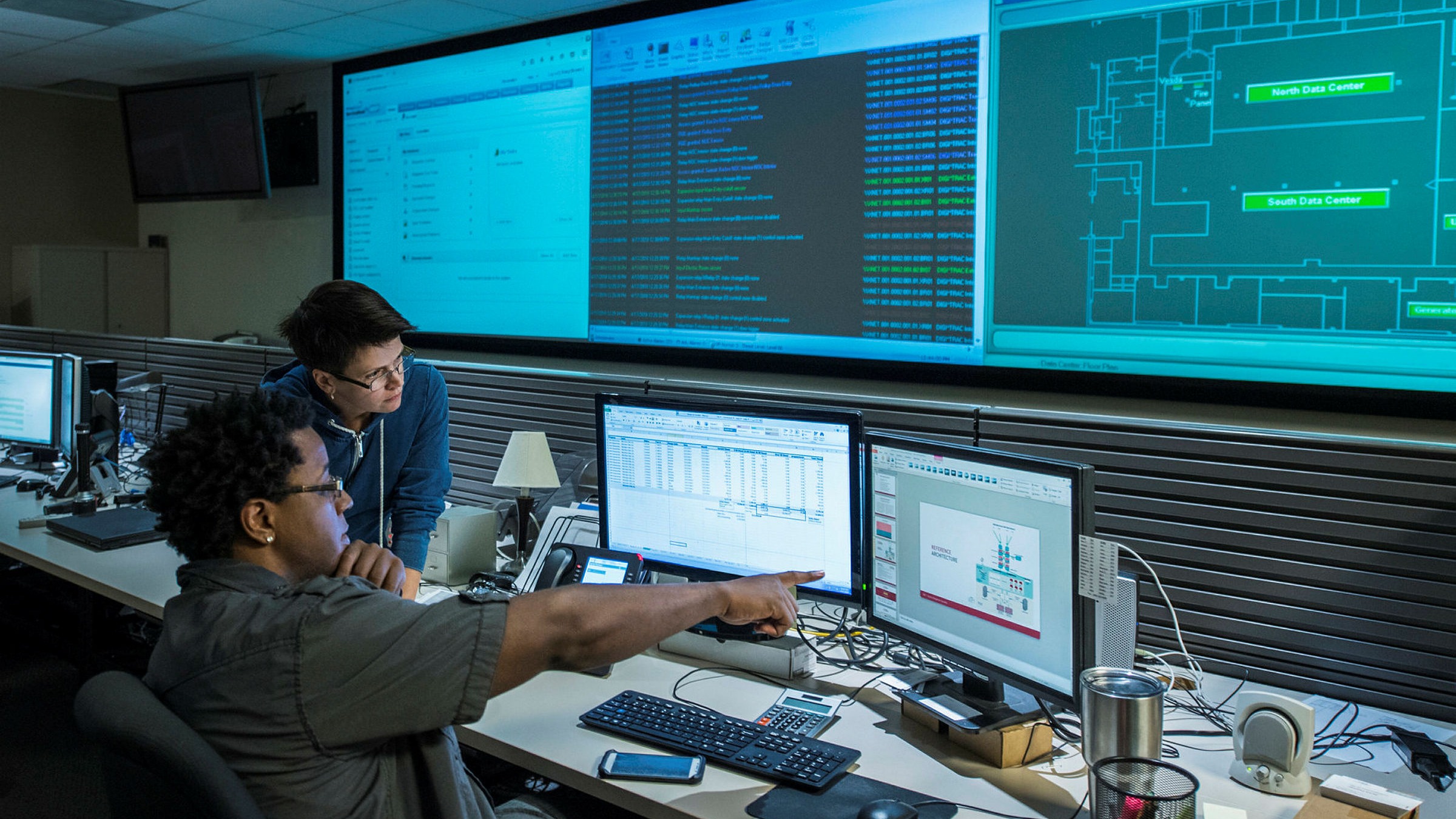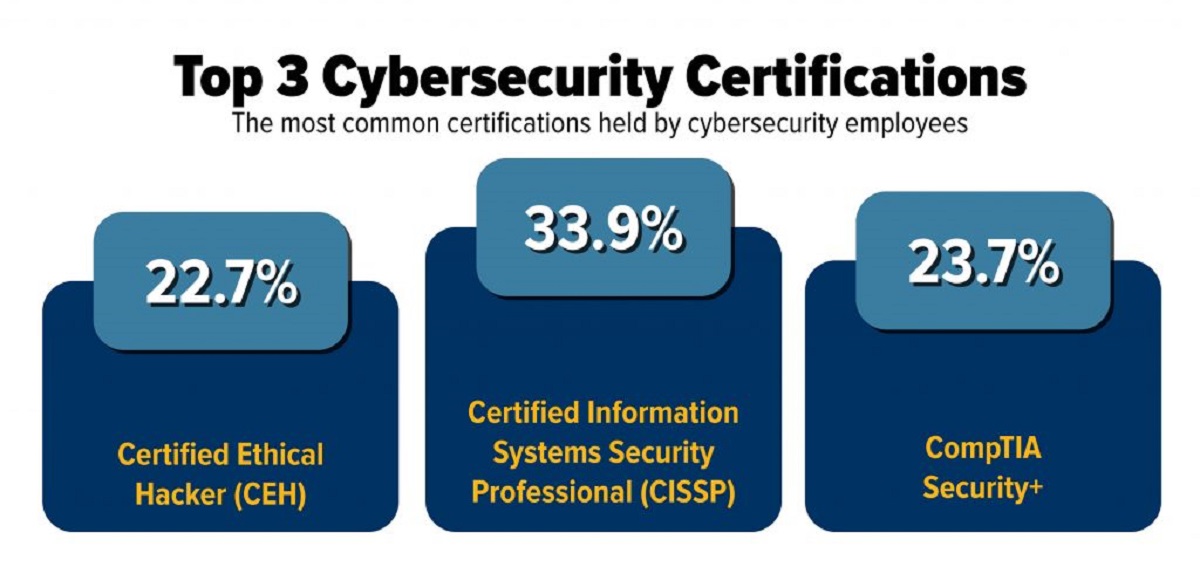Introduction
With the increasing incidents of cyber threats and data breaches, organizations across various industries are realizing the critical importance of cybersecurity. A strong cybersecurity strategy is now considered a cornerstone for the protection of sensitive information and the overall well-being of a business.
At the core of any comprehensive cybersecurity framework is the role of a cybersecurity architect. A cybersecurity architect plays a crucial role in designing, implementing, and maintaining robust security systems and protocols to safeguard an organization’s digital assets from potential cyber threats.
This article delves into the world of cybersecurity architects, exploring their definition, roles, responsibilities, required skills, and the impact they have on organizations.
With cybercriminals becoming more sophisticated, organizations need cybersecurity architects who can devise innovative strategies and implement cutting-edge technologies to defend against evolving threats. The demand for skilled cybersecurity architects has never been higher, making this career path increasingly attractive to those with a passion for technology and a determination to protect against cyber threats.
As the article unfolds, we will uncover the skills, qualifications, and career opportunities in the cybersecurity architect field. Whether you are considering a profession in cybersecurity or looking to hire a cybersecurity architect for your organization, this article will provide valuable insights into the crucial role they play in safeguarding digital assets.
Definition of a Cybersecurity Architect
A cybersecurity architect is a specialized professional who is responsible for designing, developing, and implementing comprehensive cybersecurity strategies and solutions within an organization. They play a crucial role in ensuring the confidentiality, integrity, and availability of sensitive data and information systems.
As a cybersecurity architect, it is their primary responsibility to create and maintain a secure and resilient infrastructure that can withstand cyber threats. They work closely with various stakeholders, including IT teams, management, and other cybersecurity professionals, to develop and execute security policies, procedures, and best practices.
The role of a cybersecurity architect goes beyond just implementing security measures; they also need to have a deep understanding of the organization’s overall business objectives, operations, and potential risks. This allows them to align cybersecurity strategies with the organization’s goals and ensure that security measures are implemented in a practical and cost-effective manner.
Furthermore, a cybersecurity architect needs to be proactive in identifying potential vulnerabilities, assessing risks, and anticipating emerging threats. They must stay up-to-date with the latest cyber attack vectors, hacking techniques, and industry trends to continuously evaluate and enhance the organization’s security posture.
Effective communication is also a critical skill for a cybersecurity architect. They must be able to articulate complex technical concepts to non-technical stakeholders, bridging the gap and fostering a culture of cybersecurity awareness and collaboration throughout the organization.
In summary, a cybersecurity architect is a highly skilled professional who designs and implements robust security measures to protect an organization’s digital assets. They work closely with stakeholders, understand the business objectives, anticipate risks, and ensure that security strategies align with the overall goals of the organization.
Roles and Responsibilities of a Cybersecurity Architect
The role of a cybersecurity architect is multifaceted and encompasses a wide range of responsibilities within an organization. They are generally tasked with designing, implementing, and managing the organization’s cybersecurity infrastructure. Below are some key roles and responsibilities of a cybersecurity architect:
- Security Architecture Design: A cybersecurity architect is responsible for designing the overall security architecture of the organization. This includes developing and implementing policies, procedures, and guidelines to ensure the confidentiality, integrity, and availability of data and systems.
- Threat Assessment and Risk Management: Identifying potential vulnerabilities and assessing risks are crucial aspects of a cybersecurity architect’s role. They conduct comprehensive risk assessments to determine potential weaknesses in the system and develop mitigation strategies to minimize the impact of cyber threats.
- Technology Evaluation and Implementation: Cybersecurity architects evaluate and select appropriate security technologies and products that align with the organization’s requirements. They work with vendors and IT teams to implement and integrate these technologies into the existing infrastructure.
- Security Incident Response: In the event of a security breach or incident, a cybersecurity architect plays a vital role in coordinating the incident response process. They lead the investigation, analysis, and containment efforts to mitigate the impact and prevent future incidents.
- Policies and Compliance: Cybersecurity architects develop and enforce security policies, standards, and procedures to ensure compliance with industry regulations and best practices. They stay updated on regulatory requirements and implement necessary measures to meet these standards.
- Security Awareness and Training: Building a culture of cybersecurity awareness is essential for an organization’s overall security. Cybersecurity architects play a key role in developing and delivering training programs to educate employees about best practices, potential threats, and proper use of security tools and technologies.
Overall, cybersecurity architects are responsible for safeguarding the organization’s digital assets, conducting risk assessments, implementing security measures, and ensuring compliance with industry regulations. Their interdisciplinary skills and knowledge are crucial in maintaining a strong and resilient security posture for the organization.
Required Skills and Qualifications
Being a cybersecurity architect requires a unique blend of technical expertise, strategic thinking, and strong communication skills. Here are some of the key skills and qualifications needed to excel in this role:
- Technical Knowledge: A cybersecurity architect must have a deep understanding of various cybersecurity domains, including network security, application security, cloud security, cryptography, and incident response. They should be proficient in security frameworks, protocols, and technologies.
- Risk Management: Excellent risk assessment and management skills are necessary for a cybersecurity architect. They should be able to identify potential vulnerabilities, analyze risks, and develop strategies to mitigate them effectively.
- Security Architecture Design: A strong foundation in designing and implementing security architectures is essential. Cybersecurity architects should be able to create scalable and resilient security frameworks that align with the organization’s goals and industry best practices.
- Business Acumen: Understanding the organization’s business objectives, operations, and industry trends is crucial. Cybersecurity architects need to align security strategies with these factors to ensure that security measures are practical, effective, and cost-efficient.
- Communication and Collaboration: Effective communication skills are essential for a cybersecurity architect. They must be able to clearly articulate complex technical concepts to both technical and non-technical stakeholders. Collaboration skills are also necessary for working alongside diverse teams and fostering a culture of cybersecurity awareness.
- Continuous Learning: Cybersecurity is an ever-evolving field, and staying updated with the latest threats, technologies, and industry trends is vital. A commitment to continuous learning and professional development is a must for cybersecurity architects.
In terms of qualifications, a bachelor’s degree in computer science, information technology, or a related field is generally required. Professional certifications, such as Certified Information Systems Security Professional (CISSP), Certified Ethical Hacker (CEH), and Certified Information Security Manager (CISM), are highly regarded and can demonstrate proficiency and expertise in the field.
Experience in cybersecurity roles, such as security analyst, network administrator, or system administrator, is often a prerequisite for becoming a cybersecurity architect. It is through hands-on experience that professionals gain the necessary skills, knowledge, and understanding of complex security challenges.
While technical skills and qualifications are important, it’s crucial for a cybersecurity architect to have an inherent passion for cybersecurity, a commitment to ethical practices, and a strong sense of accountability in protecting an organization’s digital assets.
Cybersecurity Architect vs. Other Cybersecurity Roles
Within the realm of cybersecurity, there are various roles and positions that contribute to an organization’s overall security posture. While all these roles are important, it’s essential to understand the distinctions between a cybersecurity architect and other cybersecurity roles. Here, we compare a cybersecurity architect with two commonly associated roles: cybersecurity analyst and cybersecurity engineer.
Cybersecurity Architect: A cybersecurity architect focuses on the strategic and high-level design of an organization’s cybersecurity infrastructure. They are responsible for creating comprehensive security architectures and frameworks that align with business objectives. Cybersecurity architects analyze risks, develop security policies, evaluate technologies, and design resilient systems to protect against cyber threats. They often collaborate with various stakeholders and bridge the gap between technical implementation and business requirements.
Cybersecurity Analyst: A cybersecurity analyst is primarily concerned with monitoring and analyzing an organization’s networks, systems, and applications for potential security incidents and vulnerabilities. They detect and respond to security breaches, conduct security assessments, and implement security controls. Unlike a cybersecurity architect, analysts focus on day-to-day activities such as threat detection, incident response, and ensuring compliance with security policies and regulations.
Cybersecurity Engineer: A cybersecurity engineer is responsible for implementing and maintaining security systems within an organization. They work closely with cybersecurity architects to deploy security technologies, configure firewalls, monitor networks, and manage security software. Cybersecurity engineers also assist in incident response and vulnerability management, ensuring that the organization’s security systems are operational and effective.
While the roles of cybersecurity architect, cybersecurity analyst, and cybersecurity engineer may overlap to some extent, each has its own distinct focus and responsibilities within the cybersecurity domain. Cybersecurity architects take a more strategic and holistic approach, designing and implementing security architectures, while cybersecurity analysts and engineers are more operationally focused, carrying out day-to-day monitoring, incident response, and system implementation.
It’s important to note that the specific responsibilities of these roles can vary depending on the organization’s size, industry, and cybersecurity maturity. Organizations may use different job titles and combine or divide responsibilities in unique ways based on their specific needs.
Ultimately, a well-rounded cybersecurity team consists of professionals in various roles, including cybersecurity architects, analysts, engineers, and others, working together to ensure a comprehensive and effective cybersecurity strategy.
Importance of a Cybersecurity Architect in an Organization
In today’s digital landscape, where cyber threats are becoming increasingly sophisticated, the role of a cybersecurity architect has never been more crucial for organizations. Here are some key reasons why a cybersecurity architect is essential:
- Comprehensive Security Strategy: A cybersecurity architect is responsible for designing and implementing a comprehensive security strategy that aligns with the organization’s objectives. This strategy ensures that all areas of cybersecurity, including networks, applications, data, and user access, are adequately protected to mitigate potential risks.
- Risk Management: Cybersecurity architects play a vital role in identifying and mitigating potential risks. They conduct thorough risk assessments to identify vulnerabilities, assess potential impacts, and develop strategies to manage these risks effectively. By proactively addressing potential threats, they minimize the likelihood and impact of security breaches.
- Secure Infrastructure: Cybersecurity architects design and implement secure infrastructures that protect an organization’s assets and data. By establishing robust security measures, such as firewalls, intrusion detection systems, and encryption protocols, they ensure that sensitive information remains confidential and the organization’s systems are resilient against cyber threats.
- Compliance and Regulatory Requirements: With the increasing number of data protection regulations and compliance frameworks, organizations need to ensure they meet legal and industry requirements. Cybersecurity architects ensure that security measures align with these regulations and implement controls to maintain compliance, protecting the organization from legal and financial repercussions.
- Incident Response: In the unfortunate event of a security breach, a cybersecurity architect plays a critical role in incident response and management. They provide expertise in investigating incidents, analyzing the impact, containing the breach, and restoring normal operations. Their knowledge and experience help minimize potential damages, reduce downtime, and prevent future incidents.
- Business Continuity: Cybersecurity architects contribute to business continuity planning by designing resilient security architectures. By ensuring the availability and integrity of critical systems and data, they minimize disruptions during security incidents or disasters, enabling the organization to continue operating without significant interruptions.
- Cybersecurity Culture: Cybersecurity architects help foster a culture of cybersecurity awareness and best practices within an organization. They educate employees about potential threats, conduct regular training sessions, and promote responsible use of technology and adherence to security policies. This awareness and vigilance among employees strengthen the overall security posture of the organization.
Overall, the role of a cybersecurity architect is crucial in protecting an organization from cyber threats. They bring expertise in designing secure systems, managing risks, ensuring compliance, and responding effectively to incidents. A skilled cybersecurity architect is an invaluable asset for any organization that values the protection of their digital assets and the confidentiality, integrity, and availability of their information systems.
Cybersecurity Architect Career Path and Opportunities
The field of cybersecurity offers promising career opportunities, and becoming a cybersecurity architect can be a rewarding and fulfilling path. Here’s a look at the career path and various opportunities available to cybersecurity architects:
1. Education and Training: To embark on a career as a cybersecurity architect, it is essential to acquire the necessary education and training. A bachelor’s degree in computer science, information technology, or a related field is typically the starting point. Additionally, obtaining industry-recognized certifications such as Certified Information Systems Security Professional (CISSP) or Certified Ethical Hacker (CEH) helps demonstrate expertise and enhance career prospects.
2. Entry-Level Cybersecurity Roles: Many cybersecurity architects begin their careers in entry-level cybersecurity positions, such as a security analyst, network administrator, or security consultant. These roles provide hands-on experience in various cybersecurity domains and help develop a foundation of technical skills and knowledge.
3. Gaining Experience and Expertise: Aspiring cybersecurity architects should aim to gain experience in different cybersecurity domains and specialize in specific areas of interest. This may include network security, cloud security, application security, or risk management. Gaining experience with diverse technologies and acquiring in-depth knowledge allows individuals to develop the skills necessary to design and implement comprehensive security architectures.
4. Advancement to Cybersecurity Architecture: With the necessary experience and expertise, professionals can transition into cybersecurity architecture roles. This involves designing and implementing security strategies, developing security frameworks, and leading security initiatives within organizations. Cybersecurity architects typically handle more complex projects and have a broader scope of responsibilities compared to entry-level positions.
5. Leadership Positions: Experienced cybersecurity architects may progress into leadership positions within an organization’s cybersecurity team. They might become managers or directors of cybersecurity, overseeing a team of architects and other cybersecurity professionals. In these roles, they are responsible for setting strategic cybersecurity objectives, managing resources, and ensuring the effective implementation of security measures.
6. Consulting and Advisory Roles: Cybersecurity architects can also explore opportunities in the consulting or advisory realm. They can work as independent consultants, providing guidance and expertise to organizations in designing and improving their cybersecurity strategies and infrastructure. Additionally, they can work for cybersecurity consulting firms, assisting clients in identifying and mitigating security risks.
7. Research and Development: For those passionate about innovation and exploring new frontiers in cybersecurity, opportunities in research and development may be available. Cybersecurity architects can contribute to the development of new security technologies, design advanced security algorithms, or contribute to academic research in the field.
In summary, a career as a cybersecurity architect offers continuous growth and a broad range of opportunities for individuals passionate about protecting organizations from cyber threats. With the right combination of education, experience, and professional development, cybersecurity architects can shape the future of cybersecurity, secure critical infrastructure, and make a significant impact in the ever-evolving cybersecurity landscape.
Conclusion
The role of a cybersecurity architect is of utmost importance in today’s digital age, where cyber threats continue to evolve and pose significant risks to organizations. As highlighted throughout this article, cybersecurity architects play a vital role in designing and implementing robust security architectures, managing risks, ensuring compliance, and responding effectively to incidents. Their expertise and strategic mindset are essential in protecting an organization’s digital assets and maintaining the confidentiality, integrity, and availability of information systems.
To become a successful cybersecurity architect, individuals need a solid foundation of technical knowledge, risk management skills, and business acumen. Continuous learning, professional development, and obtaining industry-recognized certifications further enhance their expertise and credibility in the field.
Organizations must recognize the importance of having skilled cybersecurity architects as part of their cybersecurity teams. Investing in their expertise and providing necessary resources enables organizations to build resilient security infrastructures and develop proactive strategies to combat cyber threats.
As the demand for cybersecurity professionals continues to rise, the career path for cybersecurity architects offers numerous opportunities for growth and advancement. Starting in entry-level cybersecurity roles, professionals can gain hands-on experience and specialize in specific domains before transitioning into cybersecurity architecture roles. Leadership positions, consulting opportunities, and research and development avenues are also available for those looking to further advance their careers.
In conclusion, cybersecurity architects are the linchpins in an organization’s cybersecurity strategy. Their ability to design and implement robust security architectures, effectively manage risks, and ensure compliance is crucial for protecting organizations against cyber threats. By embracing the evolving landscape of cybersecurity, continuous learning, and professional development, individuals can thrive as cybersecurity architects and contribute to the overall security and success of organizations in the digital era.

























